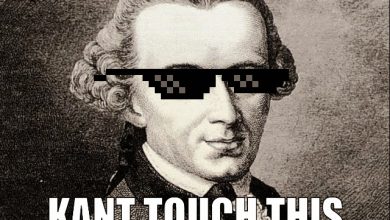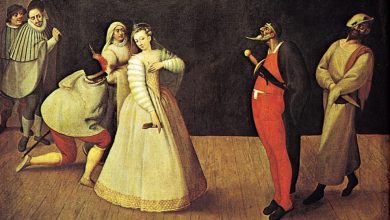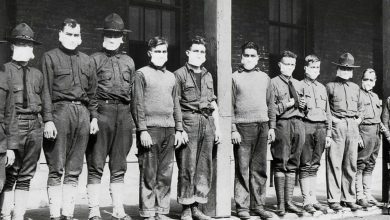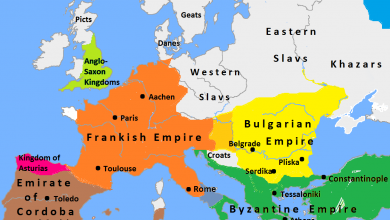The Great Union: How Romania Achieved National Unification

Every 1st December, Romanians celebrate Great Union Day, the country’s national holiday, which commemorates the achievement of Romanian unification. While the date specifically marks the annexation of Transylvania, Bukovina, and Bessarabia in the aftermath of the Great War, there is more to Romanian unification than this centenary. In fact, the creation of a Romanian nation state has occurred in stages between the 19th and early 20th centuries, although earlier attempts had been made before.
Michael the Brave
Wallachian Voivode Michael the Brave, from the house of Drăculești, is credited with the earliest attempt at uniting the lands more or less comprising present-day Romania, his efforts taking place between 1599 and 1601. This ambitious undertaking was ended, however, when he was assassinated at the orders of the Holy Roman Emperor Rudolf II who, it seemed, did not approve of the idea of letting Michael keep Transylvania as well as Wallachia. Michael did briefly manage to hold Wallachia, Moldova and Transylvania together, however once he died, the nascent union of the three principalities died with him.
The Quest for Autonomy under the Empire
Under Austro-Hungarian rule, seeing no realistic way of unifying with the other principalities, Transylvanian Romanians often pushed for autonomy within the empire, generally with minimal success. One major instance of this was during the 1848 revolutions, where the Transylvanian peasant forces of Avram Iancu proved to be one of the major obstacles for Hungary securing Transylvania. In so doing, the Transylvanians significantly hampered the Magyars’ own war for independence against Austria. Their hopes for autonomy were, however, dashed when it became apparent that the Austrians did not intend to further antagonise the Hungarians or risk fomenting Romanian separatism, after having to resort to Russian support to put down Hungary’s own rebellion.
Later advocates of autonomy included Aurel Popovici, whose plan caught the interest of influential figures in the empire – including Franz Ferdinand – as a method of reforming the empire to withstand it’s ethnic troubles, thus ensuring its survival. This plan involved federalising the empire into autonomous regions, which would be based on cultural and linguistic demographics. Fascinating as these plans may be, they came to nothing in the end, as the world descended into the horrors of the First World War with Franz Ferdinand’s assassination.

The Long Road to Unification
In 1859, Wallachia and Moldova achieved a remarkable feat by coming together in a political union, under the leadership of Alexandru Ioan Cuza. This began as a way of circumventing the prohibition on the union of these two states, a legal limit imposed by the 1856 Treaty of Paris, that had brought the Crimean war to an end.
Instead of declaring a formal union, Wallachia and Moldova simply elected the same man to the throne, which was allowed by the word of the law while in total disregard of the intention. This man was the ambitious Alexandru Cuza, who attempted to both modernise the economy of the United Principalities, and create an absolutist state. Both of these tendencies upset the major landowners, who in 1866 overthrew Cuza and replaced him with Carol I, a Hohenzollern prince related to the Prussian monarchy. It was at this point that the country became known as Romania, with the adoption of the 1866 Constitution.
Romania obtained full independence from the Ottoman Empire by allying with the Russian Empire, which wished to claim territory and in general weaken their primary geopolitical rival of the time, the Ottomans. The Russian-led Orthodox coalition proceeded to defeat the Ottoman Empire, imposing several conditions, among which numbered Romanian independence. Romania was nonetheless forced to give Southern Bassarabia to Russia, in exchange for receiving Northern Dobruja. Formal independence allowed Romania to declare itself a kingdom with Carol I as its first king.
From Defeat to Union
While Carol I lived, he pushed a Germanophile policy, in line with his dynastic ties but contrary to the more pro Entente attitudes of the general population. After all, union with Transylvania was impossible if Romania attached itself to the Central Powers. However, when Carol I died, his heir Ferdinand I pledged to prioritise the interests of Romania over that of his house and backed aligning Romania with the Entente. As such, Romania joined the war on the Entente side in August 1916.
This timing proved to be disastrous, as the Russian army, so recently victorious during the Brusilov offensive, began to crack under the strain. Furthermore, German reinforcements helped Austro-Hungarian and Bulgarian forces to squeeze the small Romanian state on all fronts. Despite this, the Romanians fought until December 1917 when an armistice was signed. The 1918 Treaty of Bucharest paradoxically allowed Romania to take Bassarabia back from the collapsing Russian Empire, but outside of this territorial concession, the peace was brutal.
Romania was stripped of access to the sea, ceding Southern Dobruja to Bulgaria and most of northern Dobruja falling under a condominium of the four Central Powers. Bucharest was further forced to concede the Carpathian passes to Austria, as well as yield oil extraction rights to Germany for 90 years. The king refused to sign this treaty, and with Entente advances on all fronts and the surrender of Bulgaria, Romania was able to repudiate the treaty and rejoin the war in November 1918.
The favourable treatment of Romania in the treaties ending the war stemmed from a perfect storm of the clever politics of Ion Brătianu, who had ensured that Romanian claims were accounted for by the Entente and Wilson’s 14 points. The latter, due to the fact that the representatives of Bucovina, Bassarabia and Transylvania all voted to join Romania. Albeit with dissent from Ukrainians in Bucovina and Hungarians in Transylvania (though the Transylvanian Saxon representatives did vote in support of union with Romania).
Continued Hostilities
Romania’s unification was not yet secure, however, as while negotiations with Hungary were ongoing, the govenrment of Károlyi was overthrown by communists led by Béla Kun. Kun argued for restructuring Hungary into a federal state in an attempt to minimise ceding territory and to gain international sympathy. Nonetheless, Kun was told that he must accept the demands made of the previous government, which he rejected, promptly beginning to build up forces. This rejection led to a Romanian offensive, which pushed the Hungarians all the way to the Tisza river, annoying the French who wanted only an advance to the demarcation line Kun had previously rejected. Hungary subsequently asked for a ceasefire with Romania, which Kun used to redivert forces to attack Czechoslovakia, occupying much of Slovakia and creating a Slovak socialist republic.
In the meantime, Romania had to contend with attacks by forces of the USSR trying to take back control of Bassarabia, though the Romanians managed to repel these offensives by May 1919. In July 1919 Hungarian forces attempted to push back the Romanian defensive line on the Tisza. At first, the Magyars managed to establish several bridgeheads, but the subsequent Romanian counterattack pushed them back across the river and continued advancing until the Romanian army marched into Budapest on August 3rd 1919.
Romania’s union was a hard fought achievement requiring clever political tactics as often as, if not more often than fighting. Its opponents and oppressors were some of the greatest powers of the day, albeit ones in decline. The union created on 1st December 1918 was threatened with dismemberment during the Second World War. Indeed, territory was lost, but the worst was mitigated by the overthrow of the fascist regime of Antonescu by Michael I and retaking the parts of Transylvania occupied by Hungary in 1940.





